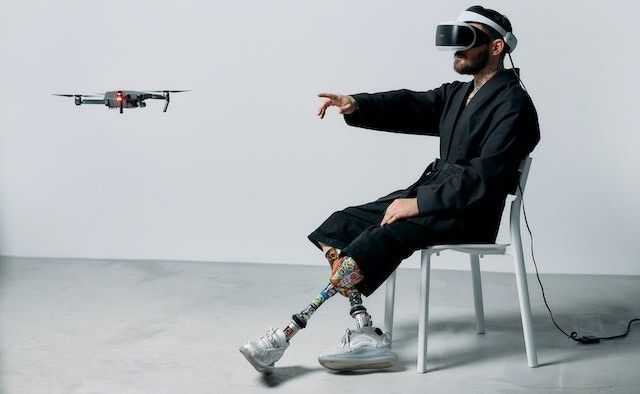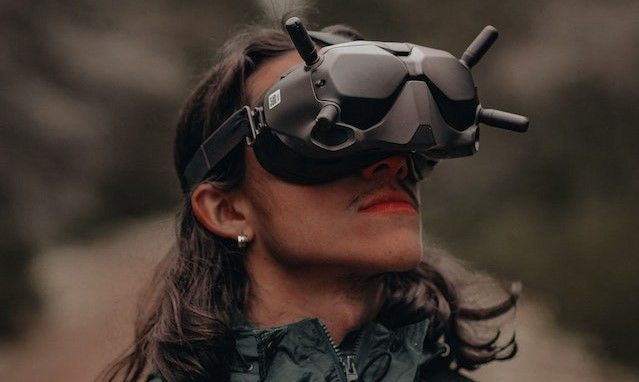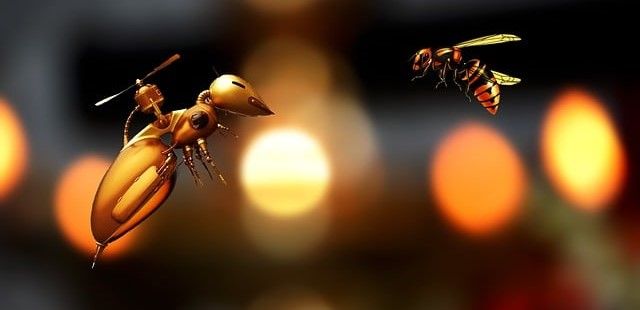Drones are already changing how we see the world. They are in constant use in filmmaking, war making, and surveillance.
But as drone technology progresses, how will our children, and our children’s children be using drones to improve their lives?
Here are some of the most likely future drone concepts that technology does not yet allow:
1. Seeing Eye Drone. Blind people will no longer need guide dogs as drones could guide them through the world. Drones could also be adapted to follow and assist people with other disabilities – perhaps aiding those with poor balance or tracking those with Alzheimer’s or dementia.

2. First Responder Drone. Car accident, natural disaster, localised flooding, broken water pipe, fallen tree? Whatever the problem the emergency services, repairmen, or town council can send a drone to get a real-time look at the problem.
3. Lost Dog or Cat Drone. Drones are excellent at covering large areas quickly, so would be ideal for searching for missing pets, especially if fitted with thermal imagining or nasal sensors for tracking.
4. Anti-Pirate Drones. Detecting, dissuading, or catching pirates (such as those off the coast of East Africa) will be much easier once drones have enough sufficient flight time and range to cover large areas of ocean. Unfortunately, they may also become a tool for pirates to find their next victim.
5. Fish Hunting Drones. Underwater drones could assist commercial fishermen as well as hobby anglers by sensing or filming the location of fish.
6. Anti-poacher drones. Tracking endangered species for research is commonplace, but this application could be expanded to ward off poachers or alert gamekeepers. This use would need to consider not disturbing the animal, as the drone’s location could inform predators of an animal’s presence.
7. Personal Trainer Drones. Setting the pace for your morning run.
8. Interview drones. Asking anybody questions without a cameraman or reporter needed. Drones could quiz sports stars, Vox-pox, brand A or brand B, etc.?
9. Drone sports. Drone racing, jousting, or fighting? Like robot wars or monster trucks but with drones.
10. Concert Swarm. Drones can already make visual displays to replace fireworks, but 1,000 speaker-drones could produce a concert sound to surround an audience for a musically immersive experience.

11. Advertising Drones. Billboards would no longer be needed if drones could project an image or video onto a street, building, or pavement space. Drones could also simply pull a banner or project a hologram into an empty space. This would allow for advertising above the action at a sports event, promoting the sale of cold drinks above the beach, or alerting passing shoppers to a store’s nearby location.
12. Farming Drones. Thousands of tiny artificial pollinators, seed planters, insect killers, or fruit pickers. Or simply to frighten birds off crops or away from airfields.

13. Housework Drones. Machines can already vacuum, cut the grass, and rake leaves autonomously, but a dusting drone would be able to clean throughout the house. Other drones could tackle other unwanted or hard to reach jobs such as washing windows or cleaning gutters.
14. Artificial Earthworm Drones. A swarm of tiny digging drones could be developed to ‘chew their way through’ through the earth to improve farmland or gardening soils. This could be especially useful for landfill and or dumping grounds of toxic material - improving the rate of decomposition and lowering toxicity levels.
These concepts may sound improbable, but what would our grandparents have thought of how drones are used today?
As humankind further advances into the digital age, where nanotechnology, the Internet of Things, and Artificial Intelligence become commonplace, so too may drone usage become as normal as a smartphone is today.
If technology permits, then the only thing that restricts the drones of the future is our imagination. All of which begs the question, “If you could do anything with a drone, what would you use it for?”
Photo credit: Ameruverse Digital Marketing Media on Pexels, Cottonbro studio, Manuel Moreno, & marian anbu juwan from Pixabay